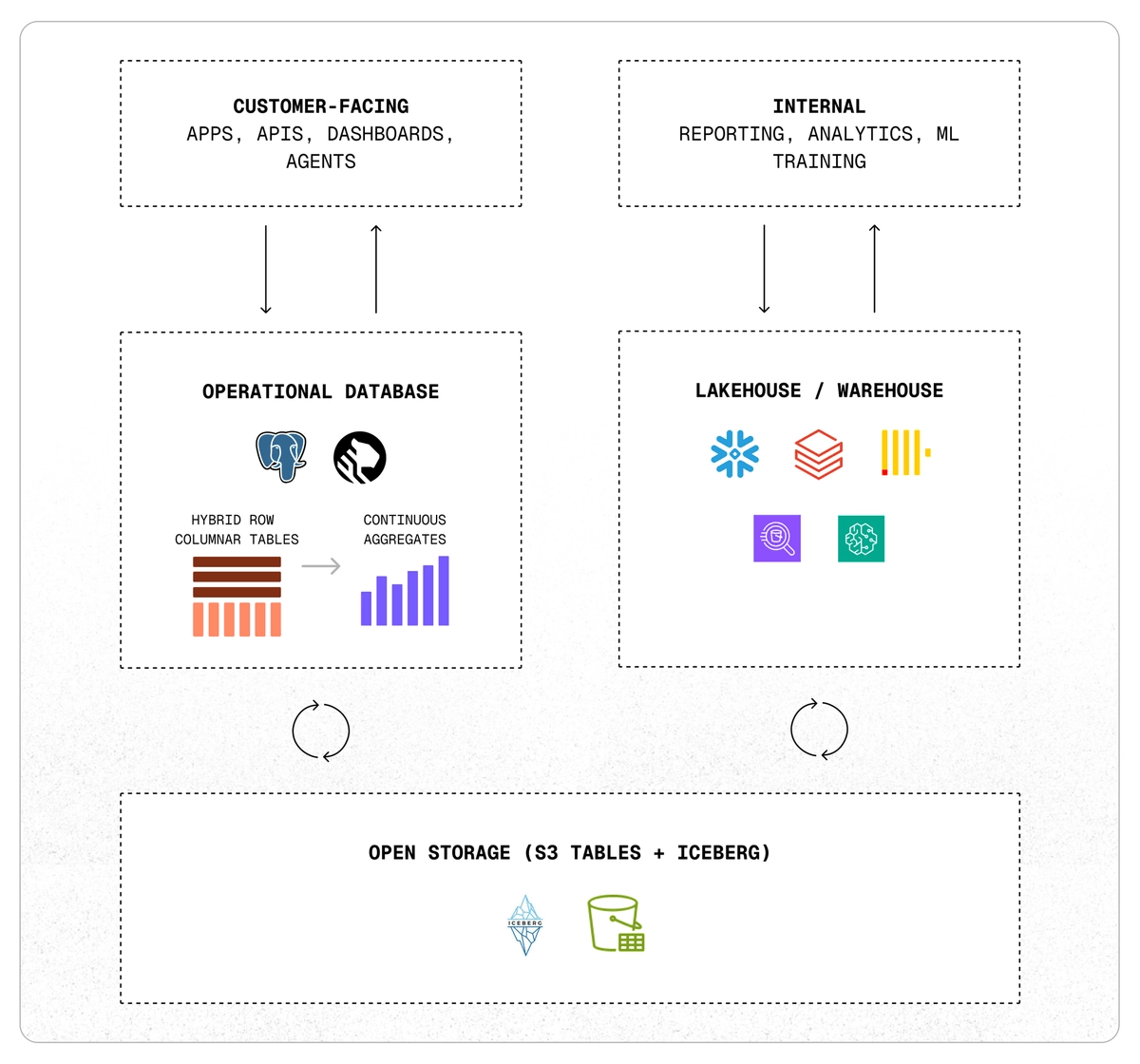Category: All posts
Jul 24, 2025

Posted by
Jose Sahad
Databricks' acquisition of Neon and Snowflake’s acquisition of Crunchy Data confirmed what many already knew: PostgreSQL has become the go-to operational database for modern applications. As every app becomes more analytical, warehouse vendors are scrambling to bolt on PostgreSQL to stay relevant. But adding transactional workloads to a warehouse doesn’t make it composable or easy to use.
At TigerData, we’re taking a different path: delivering true developer-first design with 100% PostgreSQL compatibility and functionality at the core. Developer-first design means you’re in control: no rigid data layers dictating what your app can or can’t do. You should be able to build fast, scale flexibly, and evolve your stack over time without vendor lock-in or architectural rewrites. By starting with Postgres, TigerData delivers true transactional database functionality that easily extends for analytics by combining application data and historic context.
For years, transactional (OLTP) and analytical (OLAP) systems operated in silos. But modern applications blur those lines. Developers now need a single platform that handles transactional, analytical, and agentic workloads. Databricks’ and Snowflake’s recent acquisitions of Postgres companies reflect this convergence.
The challenge facing legacy analytics and warehouse platforms is that adding real-time transactional guarantees and ACID compliance is really difficult. Merely supporting PostgreSQL syntax isn’t enough. It requires rethinking the architectural framework altogether.
In my role as VP of Engineering, I constantly hear application developers looking for two things:
Developers need low-latency reads and writes and the ability to scale without brittle ETL or glue code. Every additional database integration increases complexity and friction potential.
Closed platforms like Databricks and Snowflake are trying to ride the PostgreSQL wave, but they come with tradeoffs: high costs, vendor lock-in, and limited extensibility. They are great for general analytics or data warehousing, but they are limited in their ability to morph and grow with new workload demands such as transactional guarantees and ACID compliance.
TigerData is built differently:
Unlike closed, monolithic stacks where storage, compute, and query are fused, TigerData gives developers modularity and control so they can pick the best tools for their use case and evolve without rearchitecting.

With Tiger Lake, TigerData introduces a new modular architecture built from the ground up to support real-time analytical systems and intelligent agents. At its core, this means:
As Databricks and Snowflake race to retrofit their closed platforms with PostgreSQL, they’re acknowledging what TigerData has bet on from day one: the future will be built on open systems.
At TigerData, we believe your application should define your stack, not be constrained by it. That’s why we built an architecture that’s not only Postgres-native, but also fully open, modular, and composable. The future isn’t about force-fitting transactional workloads into analytical systems. It’s about empowering developers with an open foundation to build what’s next.